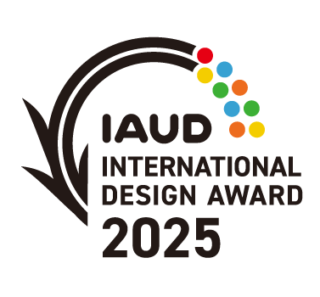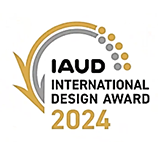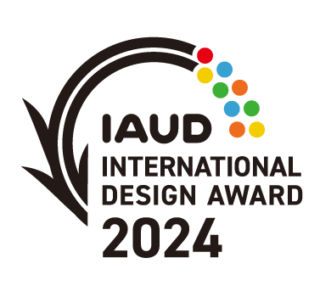2024.07.18
IAUD International Design Award Citations 2019 CHAIR'S INTRODUCTION & FULL CITATIONS
2019.12.18 Updated
CHAIRMAN’S INTRODUCTION
The Chair of IAUD International Design Award 2019 Selection Committee
Professor Emeritus, Royal College of Art, UK
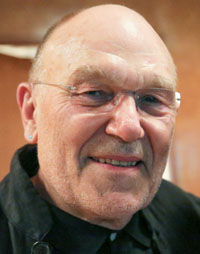
The IAUD International Design Awards were initiated nine years ago to raise awareness of Universal Design, and to showcase best practice examples. Since then, each year winning entries have demonstrated the success of this project and a growing understanding of Universal Design methods and processes. For 2019 the Jury decided it was time to raise the bar by setting a series of challenges to all participants by asking for entries that:
- Push the boundaries of Universal Design in new and exciting directions.
- Prioritize high-quality user-based research, in particular direct engagement with disabled users and others at risk of being excluded from the market.
- Consciously avoid exclusivity arising from innovations and new technologies, in particular for specific groups of users.
- Go beyond conventional 'usability' by identifying specific problems relating to diverse groups of users and delivering solutions to them.
- Demonstrate long-term corporate commitment to UD, supported by a company-wide vision and plan to ensure continuing improvement.
- Are supported by honest and informative promotional material.
Once again there was a particularly strong showing from major Japanese companies, very clearly demonstrating the extent to which they and their design teams and studios have internalized the key ideas, concepts and methodologies of user-centered inclusive design. We have also seen exciting new approaches to corporate social responsibility (CSR), with major companies deploying their technologies, capabilities and creativity to engage with people with significant disabilities or illnesses and offer heartwarming solutions and experiences that empower company staff and citizens alike with a vision of a shared and caring future.
In making three Grand and ten Gold Awards the Jury has sought to honor innovative and human-centered entries that are pushing the boundaries of UD in new and exciting directions. The bar is clearly raised, which creates a challenge for more classic examples of the user-friendly design that is becoming the norm across major sectors. Pushing boundaries in this area has become more difficult, requiring deeper research and closer user-engagement to be effective. Next year the judges will be more demanding of supporting evidence of user consultation and testing.
This year has also seen a welcome increase in applications from individuals and smaller companies. All our futures depend on an influx of young talent supported by the best in research and education, and it is to the younger generations that we must look for the innovation and lateral thinking to complement the steady advances being made in user-friendly inclusive design. To this end, the jury will, with IAUD, be seeking ways to encourage and support greater international participation, and in particular from those sectors that have previously been under-represented, such as design schools and universities, innovation hubs, individual students, design graduates and research programs advancing knowledge and best practice.
CITATIONS for GRAND AWARDS (3)
CITATIONS for GOLD AWARDS (10)
CITATIONS for SILVER AWARDS (8)
CITATIONS for BRONZE AWARDS (14)
Announcement of IAUD International Design Award 2019 Winners
JUDGING CRITERIA
The past nine years of the awards have seen sustained progress, and to maintain this momentum the Judging Panel is looking for entries that:
- Push the boundaries of Universal Design in new and exciting directions.
- Prioritize high-quality user-based research, in particular direct engagement with disabled users and others at risk of being excluded from the market.
- Consciously avoid exclusivity arising from innovations and new technologies, in particular for specific groups of users.
- Go beyond conventional ‘usability’ by identifying specific problems relating to diverse groups of users and delivering solutions to them.
- Demonstrate long-term corporate commitment to UD, supported by a company-wide vision and plan to ensure continuing improvement.
- Are supported by honest and informative promotional material.
Essential Goals of the IAUD International Design Awards Program
- Sustainable and Universal: The entry presents concepts and practices suitable for creating a sustainable, mutualistic society.
- Diversity and Inclusion: The entry shows an understanding of the diversity of traditions, cultures, lifestyles and people, and does not exclude minorities but rather expressly includes them; and thus contributes to realizing a qualitatively rich and happy way of life.
- Safe and Secure Society: The entry contributes to the construction of mechanisms, systems and morals appropriate to a society that protects human rights and respects the humanity of every individual.
- Spontaneous and Sustainable Dialogue: The entry serves to build ongoing exchanges and relationships between corporations, design practioners and clients, government, research institutions, NPOs, and citizens.
- Passing-on of Knowledge and Skills to the Next Generation: Through disseminating universal design and knowledge about it, the entry serves to cultivate individuals suited to lead the next generation.
IAUD International Design Award 2019 Selection Committee
- The Chair of the Selection Committee: Roger Coleman (Professor Emeritus of the Royal College of Art, UK)
- Co-chair of the Selection Committee: Fumikazu Masuda (President, open house inc., Japan)
- The Members of the Selection Committee:
- Francesc Aragall (President, Design for All Foundation, Spain)
- Thomas Bade (CEO, Institute for Universal Design, Germany)
- Onny Eikhaug (President, EIDD Design for All Europe, Norway)
- Valerie Fletcher (Executive Director, Institute for Human-Centered Design, USA)
- Rama Gheerawo (Director, Helen Hamlyn Centre for Design, Royal College of Art, UK)
- Toshiharu Arai (Professor Emeritus, Kanazawa College of Art, Japan)
- Keiji Kawahara (Professor, Head of Department of Design, School of Media and Design / Graduate School in Media and Design, Nagoya University of Arts and Sciences; Executive Director, IAUD, Japan)
GRAND AWARD
- In the category of Transportation Design
- The Fjords DA receives a Grand Award for:
Vision of The Fjords
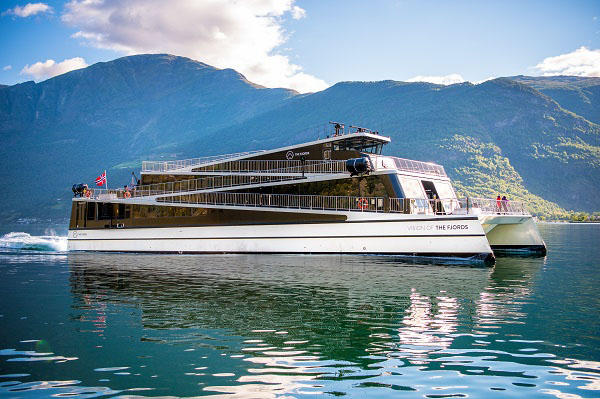
Vision of The Fjords is a truly Universal Design and an unrivalled leader in its field: a tourist boat that seamlessly integrates passengers of all abilities to offer a unique experience in an environmentally friendly vessel. With a hybrid propulsion system, the vessel blends with its surroundings in near silence while the innovative ramped design allows visitors to get as close as possible to the stunning scenery of the Norwegian fjords.
The jury described the Vision of the Fjords as:
An excellent example of how UD can drive innovation in industry, and a delightful example of environmental sustainability, which celebrates diversity by seamlessly integrating inclusive features in a superbly detailed design. One juror commented: “the elegant use of a continuous slope between decks reminds me of the Villa Savoye designed by Le Corbusier. It is a masterpiece of Universal Design”
“Vision of The Fjords” presented in DOGA’s website“Vision of The Fjords” YouTube movie
Visit FLAM com.’s official website for Naeroy fjord cruise
- In the category of Communication Design
- Yamaha Corporation receives a Grand Award for:
The SoundUD Consortium
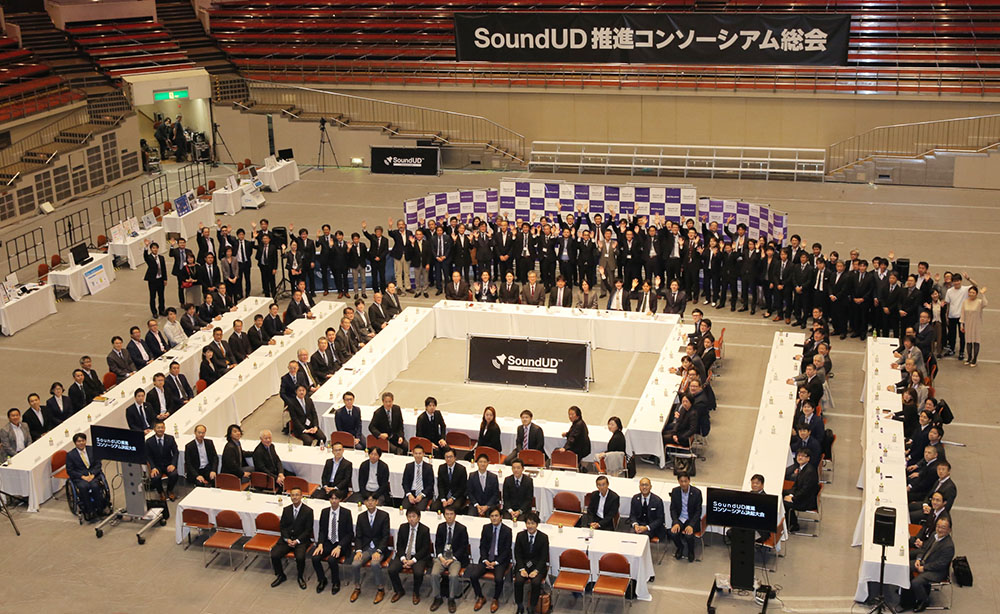
The goal of this initiative is to help deliver a UD society by making public announcements and other forms of sound information available to all in forms they can readily understand and in all situations and environments, especially those that involve emergency announcements, a global gap in translation technology. This exemplary network of close to three hundred member companies is leading the world in fostering and disseminating universally accessible information.
The jury noted that:
Since 2016, when the SoundUD concept was honored with a Gold Award, the SoundUD Consortium has achieved a significant real-world impact by demonstrating its long-term commitment to creating a UD society. The activities of the SoundUD Consortium have led to successful standardization and exemplary implementation projects that are making a real difference to people’s lives.
More information- In the category of User Experience Design
- Fujitsu Limited and Fujitsu Design Limited receive a Grand Award for:
Ontenna
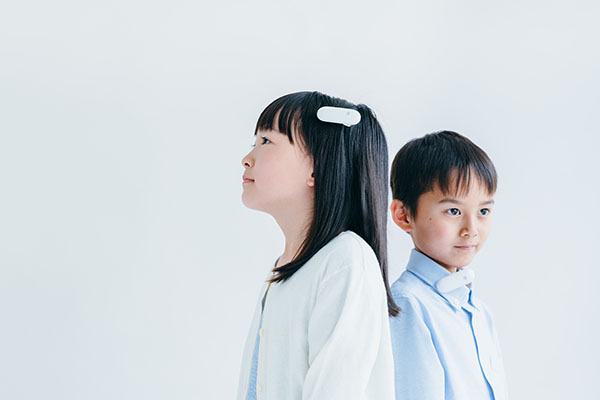
A highly innovative interface developed over an eight-year period in close collaboration with deaf people. Ontenna delivers access to sound in a new way by converting it to vibration and light in real-time, and revealing features such as rhythm and pattern. By embracing the needs of deaf people and allowing Ontenna users to ‘feel’ sound through other senses it opens up a new and shared experience to people of all ages and abilities.
The jury applauded this entry as:
A simple but ingenious product that embodies the essence of inclusive design. They described it as a truly innovative approach to Corporate Social Responsibility that offers a new experience of sound for all, clearly demonstrating the company’s commitment to building a genuinely UD society for the future. The small, smooth, white device fits subtly on the hair or collar.
More informationGOLD AWARD
- In the category of Social Design
- Shiseido Co., Ltd. receives a Gold Award for:
Lavender Ring Makeup & Photos With Smiles
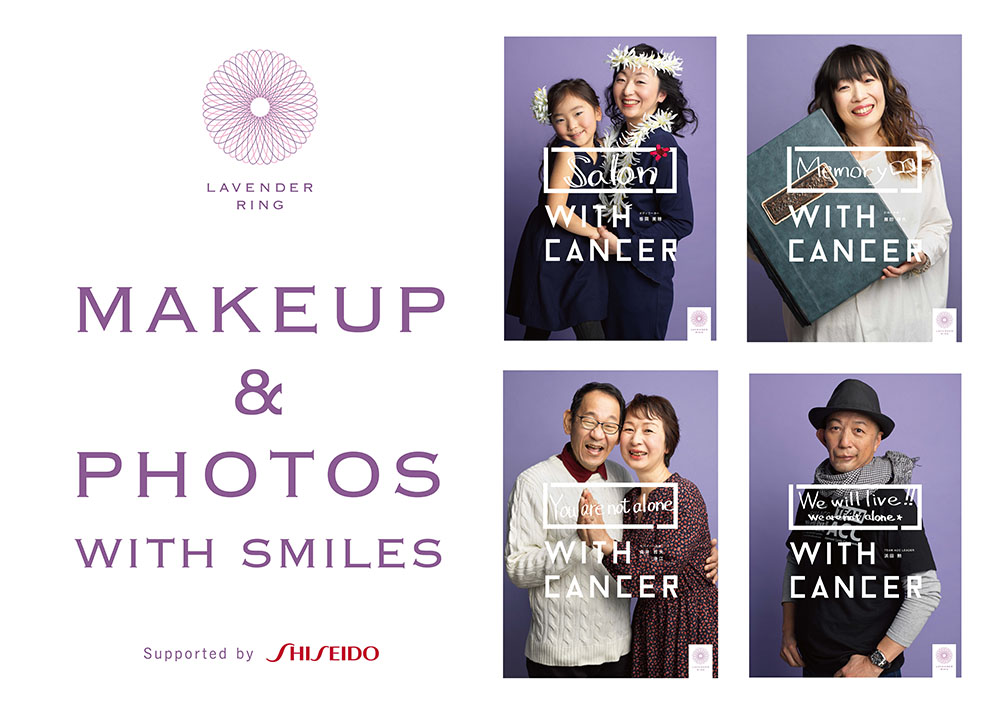
One in every two people in Japan is likely to develop cancer during their lifetime, and this project sets out to help them find the self-confidence and esteem they need to confront challenging treatments and an uncertain future. Expert beauticians make up male and female cancer patients to help them discover a self-image they can feel happy with, photographers capture their new-found selves and posters are created to support them through treatment and rehabilitation.
The jury believes this entry:
Responds to a seldom-considered and very large population of people with cancer or recovering from cancer with an attractive campaign that has great potential for replication. An imaginative, people-centered initiative that reframes corporate social responsibility in a very positive and pro-active way. Lavender Ring is good for cancer patients, and an effective way of boosting morale within the company through direct action for social benefit and emblematic of a UD society. As men (62%) are more likely than women (47%) to develop cancer over their lifetimes this program importantly offers help to both sexes.
- In the category of Social Design
- Suma Universal Beach Project receives a Gold Award for:
Creating a society in which the challenged can try to do anything and make their dreams come true.
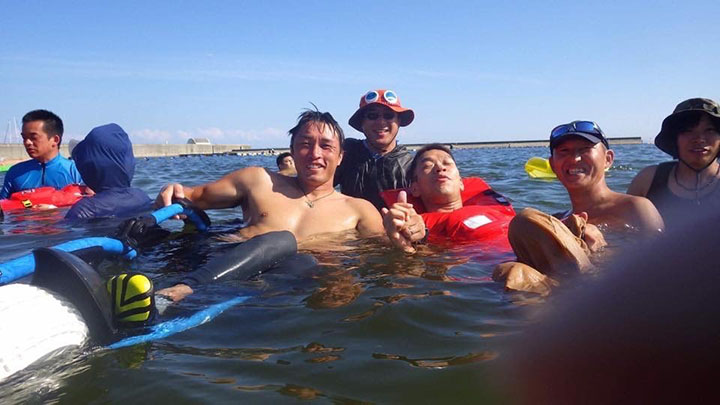
Universal design is not strongly catered for in outdoor activities in Japan, and as a consequence people with disabilities have less choice and less incentive when it comes to enjoying nature. This project aims to turn Suma Beach into a universal amenity where disabled and older people, and parents with small children can enjoy themselves on the beach and take part in seaside activities.
The jury recognized this entry as:
A delightful social integration project bringing people of all ages and abilities together to enjoy local beaches. It is a small initiative that has achieved considerable success and acts as an inspiration, and is a tribute to civic engagement. A very diverse mix of integrated recreational group activities is offered, some using very innovative products and techniques. Excellent videos make the examples very compelling.
- In the category of Housing and Architecture
- Bangkok University School of Architecture receives a Gold Award for:
From Innovation Act to Action Learning: Cultivating Inclusive Architects
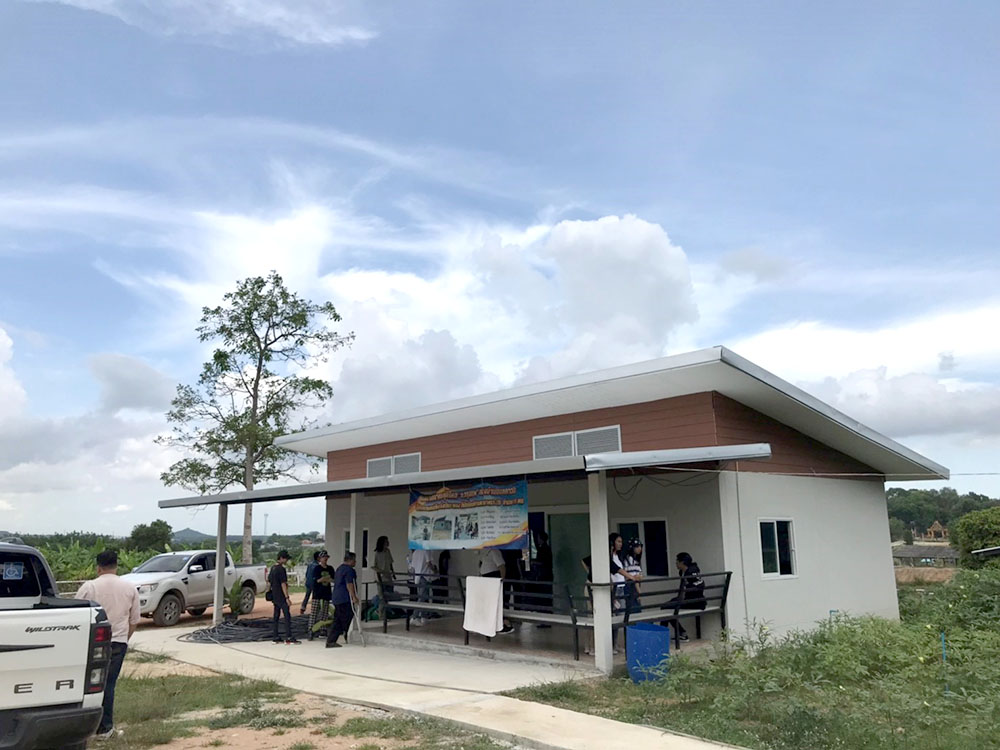
An exemplary program of Universal Design education through active learning on a real-world project that brings UD principles to life for architecture students. The program is funded through mandatory support for disabled people in the workplace and creates accessible accommodation for disabled trainees and students.
The jury commended this entry as:
An imaginatively funded direct-experience UD training program that brings together architecture students with disabled user in a practical collaboration. A hands-on approach where UD education is directly linked to the co-design and construction of accommodation offering access to education and training for disabled students. Bangkok University has raised the international bar for architectural education with a program that pushes the boundaries of Inclusive Architecture in a solid, appropriate and creative manner.
- In the category of Housing and Architecture
- Hankyu Hanshin Properties Corp. and SENA Development Public Company Limited receive a Gold Award for:
Design of a home where everyone can always live comfortably:
“Geofit plus Stage”
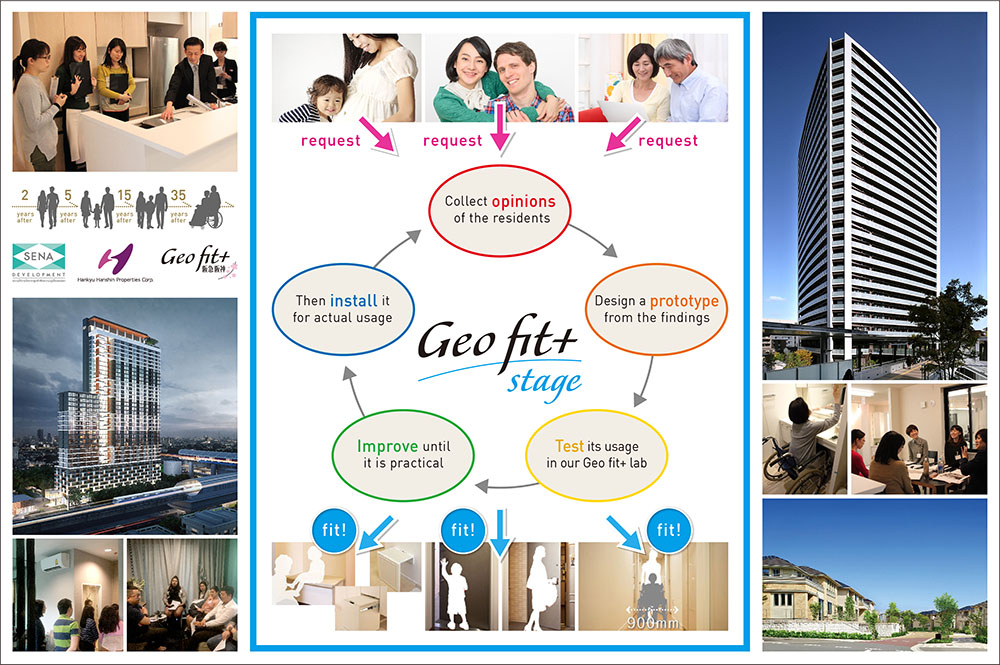
Housing manufacturers Hankyu Hanshin Properties have developed Geofit plus over a ten-year period of close collaboration with and feedback from housing system residents. Questionnaires and field surveys based on experimental living spaces and actual housing form the basis of a process of continuous consultation and improvement that lies at the heart of a housing design system that offers considerable flexibility and individualization within a standardized format.
The jury described this entry as:
An example of impeccable implementation of UD methodologies producing excellent results both social and economic, based on high levels of end-user participation – over 8000 people – in the development of complex structures. Universal design at its best!
Hankyu Hanshin Properties Corp.
SENA Development Public Company Limited
- In the category of User Experience Design
- Fujitsu Limited; Fujitsu Design Limited; JTB Corp.; All Nippon Airways Co., Ltd.; Kawasaki Frontale Inc.; Japan Professional Football League and Kawasaki City receive a Gold Award for:
Soccer and Universal tourism - Soccer tour for children with developmental disabilities
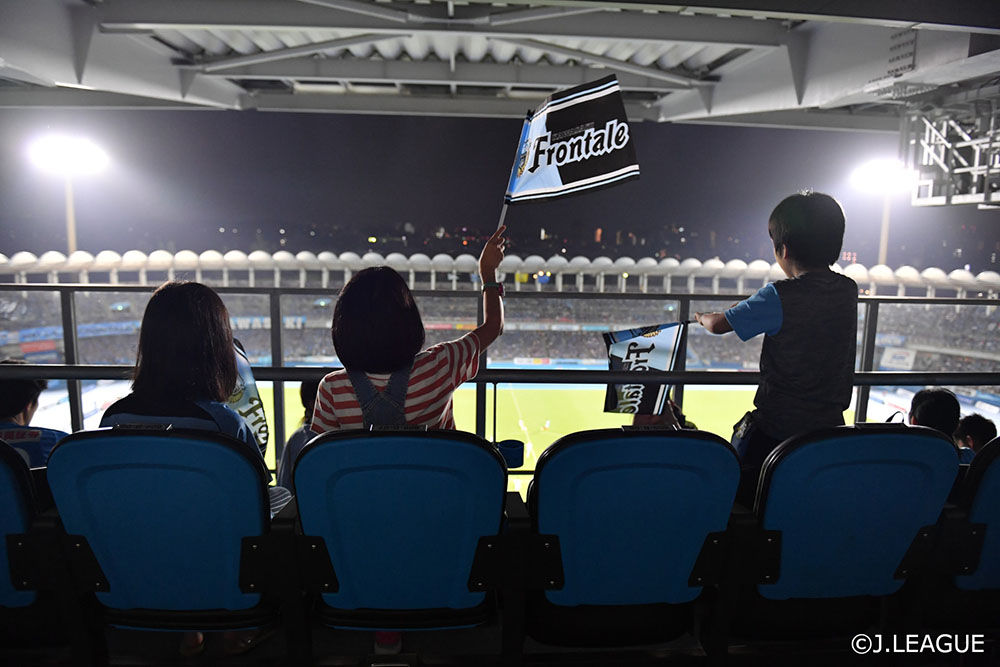
The degree of recognition of developmental disabilities in society is not high. As a consequence, young people with these conditions and their families are unlikely to participate in sporting activities, to travel for pleasure or to play an active role in their communities. In addition, many children with developmental disabilities have hyperaesthesia, which makes participation even more difficult. Several companies and organizations joined together to address these issues and deepen mutual understanding of them by promoting access to sports and universal tourism, with an emphasis on football as one of the most popular modern sports and spectator activities.
The jury saw this entry as:
A remarkable strategy for raising awareness of and understanding and accepting disabilities by focusing on issues like hyperaesthesia and developmental disabilities. It provides a striking example of corporate collaboration and community engagement centered on children with neuro-diversity and demonstrates the value of a radical and imaginative approach to corporate social responsibility.
- In the category of Public Space Design
- Calicrates receives a Gold Award for:
The Accessibility Digest
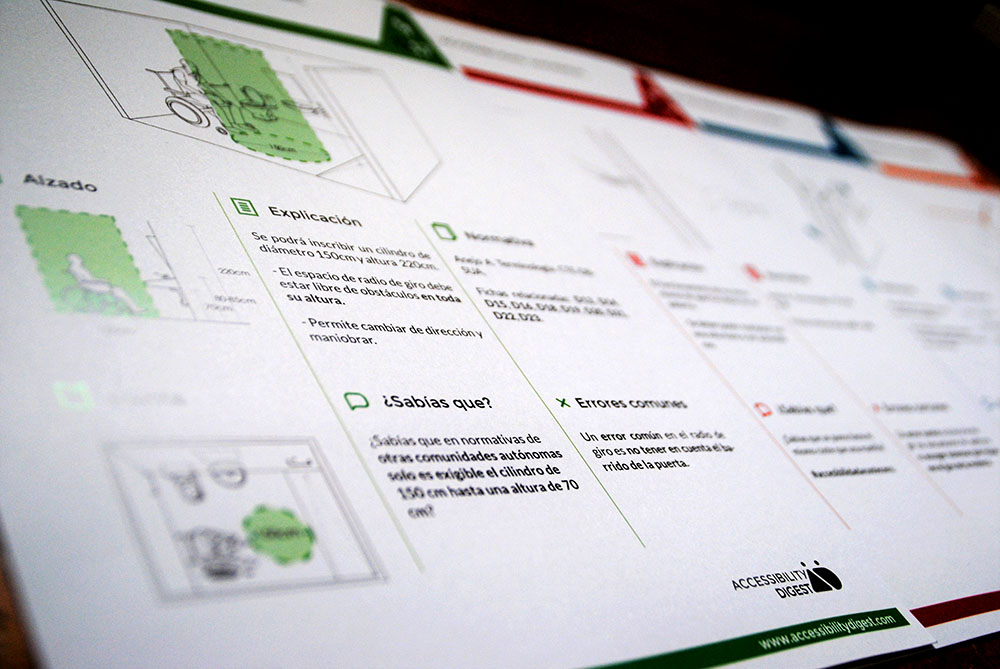
The Accessibility Digest is a graphic guide with all the necessary information to make design for all easier. It is a collection of graphic and technical datasheets with drawings, technical facts and worked good practice examples for different accessibility parameters, classified according to DALCO criteria (Ambulation, Apprehension, Location, Communication) and Spanish Regulations.
The jury applauded this entry as a:
Well-realized and highly accessible set of design guidelines helping architects and householders understand and implement accessibility principles. By analyzing how architects use visual images the Accessibility Digest has been conceived as a practical and effective tool for designing accessible spaces that goes beyond current legislation and pushes the conventional boundaries of UD practice.
- In the category of Public Space Design
- Access Safety receives a Gold Award for:
Sintered Natural Stone and Sintered Concrete
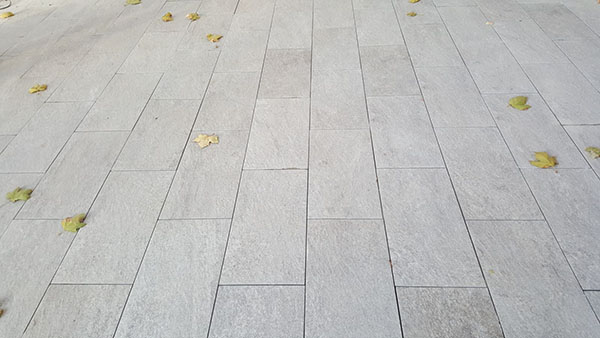
An innovative range of new urban pavement materials designed according to UD philosophy and using sintering technology to meet a range of practical and accessibility requirements. These high quality products offer both durability and easy-clean surfaces along with reduced energy consumption in production, transport, maintenance and replacement. In particular they combine non-slip properties in both dry and wet conditions with outstanding performance qualities and low weight.
The jury found this entry to be:
A well-conceived and researched new material development program offering real cost-efficient benefits in UD urban design, greater sustainability and enhanced aesthetic value. Importantly the surface qualities of this new material deliver significant gains in slip-resistance and resistance to contaminants such as chewing gum. An excellent example of how new materials can contribute to UD.
- In the category of Healthcare and Welfare Design
- MOIO GmbH receives a Gold Award for:
Moio. The smart care patch
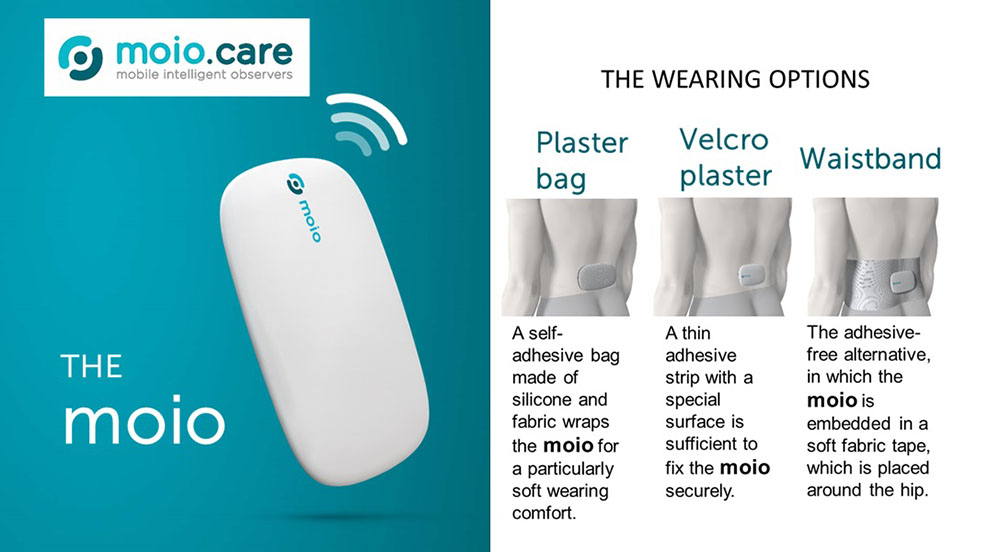
The moio is a clever monitoring device for people with dementia in professional and home care settings, and the key element in the moio.care system. In the form of a flat, smooth and flexible sensor module it constantly assesses the patient’s status, and only when recognizing a specific need will it establish a wireless data connection to transmit necessary information to the person responsible for care, reducing unnecessary awakening of patients while ensuring help is provided whenever needed.
The jury praised this entry as:
A well-designed and realized monitoring system for dementia patients, in particular in care homes, but also with potential for domestic care. An inconspicuous assistance and diagnostic solution that responds to a real need to unobtrusively monitor people with significant physical and cognitive limitations. Impressive attention has been given to comfort, information security, use of geo-fencing, and limiting access only to pertinent personnel. Importantly it can help to reduce the care worker's burden without compromising the quality of care.
- In the category of Communication Design
- Aira Tech Corporation receives a Gold Award for:
Aira: Powering Inclusion for Blind, Low-Vision Individuals
Through Business Partnerships and Human AI Technology
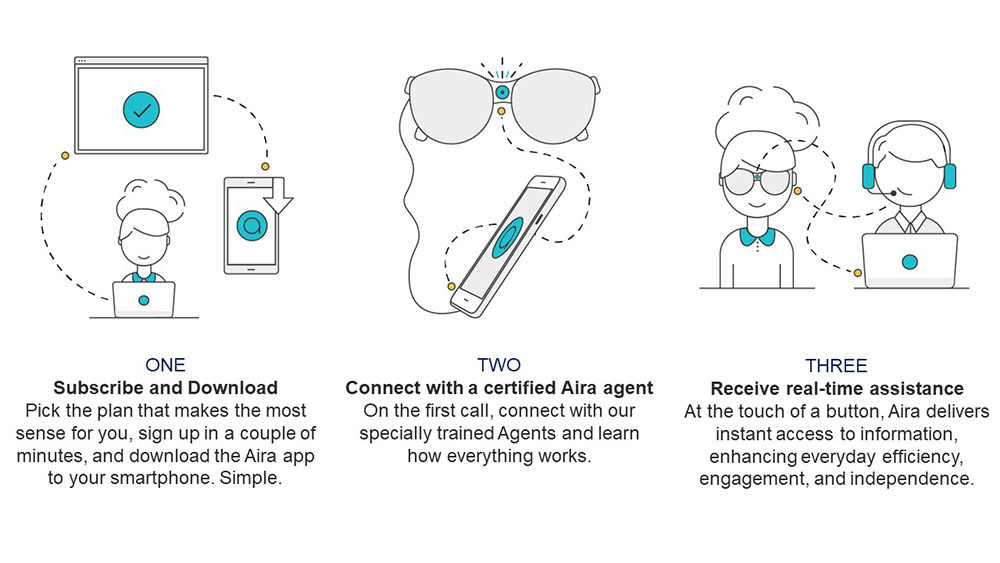
With the help of streaming video and smartphone technology, Aira connects blind or low vision users with specially trained people who provide immediate visual information about the user’s surrounding environment This is available free of charge at a wide range of business locations partnering with Aira, such as retailers, airports, transport facilities and museum, enabling people typically on low and fixed incomes access to work and enhanced independence.
The jury felt this entry offered:
An innovative combination of AI technology with corporate sponsorship to deliver free-at-point-of-access assistance and information to vision impaired people. Again, an excellent example of meaningful and desirable partnerships promising a UD society for the future.
- In the category of Regional Planning
- Cohen Hilberry Architects and the commissioning partners, the US National Park Service and the Gateway Arch Park Foundation receive a Gold Award for:
Gateway Arch National Park & Museum at the Gateway Arch

The Gateway Arch project saw the transformation of the National Park surrounding a high-profile design icon, Eero Saarinen’s Gateway Arch in St Louis, Missouri, into a substantially more welcoming and inclusive landmark through a commitment to universal design. This was achieved through a public private-partnership between the US National Park Service and the Gateway Arch Park Foundation prioritizing Universal Design. Throughout the project the landscape architects, architects, and exhibition designers worked in collaboration with a UD committee of user/experts.
The jury commended this entry as:
A fine example of a large-scale inclusive urban renovation project successfully commissioned and driven by the two clients' deep commitment to Universal Design and applauded the commissioning public/private partnership for its vision and persistence in ensuring the delivery of a major example of Inclusive Design in a public space. It is distinguished by the seamless integration of Universal Design with preservation.
SILVER AWARD
- In the category of Healthcare and Welfare Design
- Cosmotec Co., Ltd. receives a Silver Award for:
Wemo, wearable memo, which relieve the pressure and the stress to memorize
A wrist-band style wearable notepad with a unique surface coating that allows people to make and make simple notes and reminders that stay with you. You can write directly on the band with any oil-based ballpoint pen, and erase notes by simply rubbing with a finger or eraser making this a convenient and accessible memory aid for everyday use.
The jury commended this entry as:
A simple solution to a widespread problem, and a good example of something that is inexpensive, low-tech, and serves an identified user need. Evidence of strong user support is cited for this product that could appeal to a very wide range of people.
- In the category of Healthcare and Welfare Design
- Hiroaki Nishimura Design inc. and Nitto Co., Ltd. receive a Silver Award for:
Archelis
Archelis is a wearable chair that enables surgeons and medical staff to move about and sit comfortably during long operations without undue physical strain. This offers significant advantages in particular in laparoscopic surgery which body stability is required for procedures requiring high degrees of accuracy and dexterity.
The jury saw this entry as:
An innovative body-support design developed with and for laparoscopic surgeons, including those with congenital or acquired functional limitations. It has potential to be customized for other demanding tasks and activities. As such it stands outside the realm of true UD, but it could also have a role to play in rehabilitation and the management of specific physical conditions, thus giving it a broader potential user-base.
- In the category of Healthcare and Welfare Design
- Nonprofit Organization Japan Hair Donation & Charity receives a Silver Award for:
Free provision of pediatric medical wigs through Hair Donation
Children who have lost their hair due to cancer, alopecia, or other causes can find the experience traumatic and demoralizing. This challenge is effectively addressed through this project which encourages donations of hair that are then used to create custom-made pediatric wigs that are provide free of charge to children under the age of 18. This program is one of several similarly laudable initiatives from the same organization.
The jury described this entry as:
A simple and effective idea developed and delivered with a high-level of commitment and energy that addresses an important and much-neglected issue in an inclusive and engaging way.
- In the category of Public Space Design
- Dr Mao Kudo of the School for the Mentally Challenged at Otsuka, University of Tsukuba receives a Silver Award for:
Universal Sign Design includes perception characteristics of Intellectual Disabilities
In this practical study, factors affecting the use of easy-to-understand pictograms (graphic symbols) and understandable print kana (alongside Chinese characters) were investigated with a group of high school students with intellectual disabilities. The results were implemented in an educational facility in March 2019 leading to proposals for universal symbol design and usage for people with intellectual disabilities.
The jury welcomed the research undertaken in this field as:
Intelligent and thorough research into user-consultation methodologies in pictogram design, with an excellent worked example. The design of signage recognizing the needs of people with mental disabilities is an important social requirement. The Jury hopes that that the team will continue the research with an expanded group of users and in different environments to refine the end result.
- In the category of Service Design
- Mitsubishi Electric Corporation and Mitsubishi Electric Building Techno-Service Co., Ltd. receive a Silver Award for:
ELE FIRST-i plus Smartphone Service: Mitsubishi Electric Elevator-linked App
This is a smartphone app that enables users to call an elevator from a distance. Also, by specifying the destination floor in advance, users are able to call an elevator simply by approaching it. This hands-free operation ensures comfortable mobility within buildings, in particular for wheelchair users.
The jury praised this entry as:
A good example of continuing product improvement through user-aware design based on an established, company-wide UD policy. Once again Mitsubishi has identified an opportunity to solve a new problem, with excellent user testing and relevant options for hands-free and confidential communication.
- In the category of Interaction Design
- Sony Corporation receives a Silver Award for:
CAVE without a LIGHT
An entertaining and engaging way for sighted and vision-impaired people to enjoy a common experience in the form of an experiential exhibition of Sony’s sound and tactile technology that does not rely on vision to appreciate it. An inclusive design process was adopted to develop the exhibition, and a demonstration event in the United States was enjoyed by a diverse audience of people with and without visual impairments.
The jury saw in this entry:
A richly multi-sensory experience and a rare example of "disability as an asset." It described it as very positive idea integrating the needs of visually impaired people in an immersive sound experience and an interesting development in corporate social responsibility practice.
- In the category of Communication Design
- Inkl. Design GmbH receives a Silver Award for:
Germany's first truly inclusive children's book: content and design concept
In collaboration with Aktion Mensch e.V., a German non-profit organization and publishing house Carlsen Verlag, Inkl. Design has produced a single one-book-for-all design that children can read and enjoy together, regardless of physical of cognitive limitations.
The jury applauded this entry as a:
A genuine and thorough exploration of the challenges of achieving real UD in children’s books, resulting in an excellent worked example and a set of design guidelines. An important step forward.
- In the category of Regional Planning
- Mizuho Co., Ltd. and Yoshizumi Corporation receive a Silver Award for:
Realization of normalization “House of Mizuho” and “Seven Stars”
in Kitashinmachi, TanbaSasayama-city
The personal experience of living in close contact with a severely disabled child inspired an impressive range of initiatives aimed at better integrating disabled people within a local community, from the personal level up to and involving a whole town. As a result, universal design thinking has been adopted in the Kitashinmachi, TanbaSasayama-city area, making it age and ability-friendly and an enjoyable living environment for socially vulnerable people.
The jury found this entry:
An excellent model for community integration programs, in particular for older people and people with developmental disabilities. But the most striking aspect is the sheer dedication of a single individual whose family experience of extreme disability inspired a series of initiatives that are transforming life for local people.
BRONZE AWARD
- In the category of Product Design
- Mitsubishi Electric Corporation receives a Bronze Award for:
Mitsubishi Electric Air Conditioner R / BXV Series
A better air-conditioner, with careful attention given to technical, operational, control and maintenance aspects, along with overall user-friendliness.
The jury praised this entry as:
An effective product evolution offering benefits for adults, children and older people and a good example of continuing product improvement through user-aware design. The remote control is a good example of UD.
- In the category of Product Design
- Mitsubishi Electric Home Appliance Corporation and Mitsubishi Electric Corporation receive a Bronze Award for:
Built-in Dishwasher and Drier to Promote Sharing of Housework and Family Togetherness
A dishwasher and drier with a large washing tank, generous loading capacity and a multi-function basket, all making for easy use. A simple touch switch allows the door to be opened automatically and quiet operation makes it unobtrusive in an open-plan kitchen.
The jury applauded this entry as:
A good example of continuing product improvement through user-aware design in a standard appliance. It applauds Mitsubishi on its company-wide UD policy but is looking for UD that goes beyond basic user-friendliness.
- In the category of Product Design
- Mitsubishi Electric Corporation receives a Bronze Award for:
CG Series Refrigerators: Supporting a Delicious and Flexible Culinary Life
A medium-capacity refrigerator for smaller households, from newlyweds and young families raising children to empty-nesters and seniors. The CG series offers a unique chilling function carefully detailed exteriors that will stay clean for years of use.
The jury saw this entry as:
A good example of continuing product improvement through constant learning from customers with a mix of features tailored to the small household. While the jury praised the level of user-aware design it did not see a UD dimension beyond that.
- In the category of Product Design
- Trusco Nakayama Corporation receives a Bronze Award for:
Platform Truck with start assist function
Platform trucks tend to be heavy and difficult to move when fully loaded. This problem is overcome with a simple manually operated device that makes the truck easy to get moving from a static position. The start assist truck is relatively inexpensive compared with motor-assisted versions and suited to older or female workers.
The jury saw this entry as:
A low-cost simple design that delivers clear benefits to workers at an entry-level price. A ubiquitous piece of warehouse and workshop equipment reinvented to respect the limitations of older people and woman who are increasingly present in the manufacturing sector.
- In the category of Product Design
- Sony Corporation receives a Bronze Award for:
Wireless Handy TV Speaker [SRS-LSR100]
Wireless TV speakers with a remote control function and sound processing to make audio easier to hear and dialog crisper and clearer. These speakers automatically adjust volume according to ambient sounds, and with a large volume control with integrated power button are simple to use.
The jury described this entry as:
A wireless remote speaker integrating a TV remote control that meets the needs of disabled and elderly people who are housebound or others who rely on the television for information, entertainment and news. It felt that a more probing research process could well have led to additional user-friendly features.
- In the category of Product Design
- Katrin Potyka receives a Bronze Award for:
Dryxx- handbag, shopping and backpack in one
Dryxx is 3-in-1: handbag, shopping bag and backpack. Equipped with only one strap, Dryxx offers several carrying options along with a variable bag-volume so can adapt itself to a wide range of user needs.
The jury commended this entry as:
A simple, ingenious and delightful design for a multi-function bag meeting the need for a bag that is light, flexible and good-looking. Although very user-friendly in concept and execution no real account is given of a UD process.
- In the category of Public Space Design
- Dirtworks Landscape Architecture, PC receives a Bronze Award for:
Nature for Everyone
The McGraw Family Garden of the Senses is an example of how design with nature can offer experiences that are engaging and enriching for every visitor, regardless of age or ability.
The jury found this entry to be:
A competent inclusive design of a small two-acre garden in the100 acre Cape Cod Heritage Museum and Gardens, an area with a very lager elderly population nearby. This second ‘garden of the senses’ entry from Dirtworks, demonstrates the effectiveness of the company’s UD methodology.
- In the category of Healthcare and Welfare Design
- Fujitsu Limited and Fujitsu Design Limited receive a Bronze Award for:
Medical examination results reference service for pregnant women
A smartphone app makes medical examination results and ultrasound images available to pregnant women. Doctor’s advice can be checked quickly and conveniently, making communication between doctor and expectant mother easier and more effective.
The jury described this entry as:
A smartphone app that delivers healthcare information and advice along with medical images to pregnant women and their families. A positive and reassuring implementation of communications technology.
- In the category of Systems Design
- Fujitsu Limited, Fujitsu Design Limited, Fujitsu Kyushu Network Technologies Limited, Hokkaido Kamoenai Village and Coast Research Engineering Co., Ltd. receive a Bronze Award for:
Fishtech Aquaculture Management
An aquaculture control system that remotely gathers relevant data and presents it in a unified interface, enabling a wide range of workers to manage local, small-scale aquaculture. The system is particularly suited to establishing sustainable specialized fisheries giving employment to local people, potentially including disabled and older people.
The jury commended this entry as:
A fish-farming management system that allows for flexible working and facilitates sustainable food production. The system uses ICT technology for cultivating and harvesting local sea Urchins and sea Cucumbers as a means of supporting land-based aquaculture. In particular where, given the aging of local fishermen, traditional methods no longer are viable.
- In the category of Communication Design
- Fujitsu Client Computing Limited and Fujitsu Design Limited receive a Bronze Award for:
Raku-Raku Smartphone me F-01L
This Raku-Raku smartphone was developed as a bridge for older users between a more familiar traditional handset form and an internet-enabled smartphone. The design focuses on usability, so that anyone can use it safely and securely.
The jury applauded this entry as a:
An age-friendly Raku-Raku handset designed to introduce late–adopters to smartphone use. It includes some innovative features but not the best of recent UD phone developments.
- In the category of Communication Design
- DynaComware Corporation receives a Bronze Award for:
Global font ‘King Gothic’
DF King Gothic is a comprehensive and consistent sans-serif font family that supports 15 language sets and is optimized for ease of reading. The design aims to bring better communication into different cultures and reading habits as a truly global font family.
The jury noted that:
A thorough, elegant and high-quality example of inclusive typeface design with a strong sense of multi-cultural awareness implemented in 15 languages.
Unfortunately the lack of clear evidence of user-research and validation restricts it to a bronze award.
- In the category of Social Design
- The University of Tokyo receives a Bronze Award for:
Radioactive Live Soundscape
An “Acoustic Ecology Data Transmitter” was installed in the exclusion zone 10 km from Fukushima Daiichi nuclear power plant to transmit and store a live stream of sound from an unmanned remote sensing station in the area.
The jury described the Radioactive Live Soundscape as:
A fascinating research project and an important initiative capturing sound data from the Fukushima exclusion zone to demonstrate how wildlife can recover after a disaster. However, as the UD approach of the project is not clear enough, it also suggested disseminating this insight into life in the area to schools and through websites to raise awareness about nuclear risks and nature recovery.
- In the category of Housing Equipment
- Gerig Design AG receives a Bronze Award for:
Softlit Mirror Cabinet
This lighting innovation uses continuous indirect lighting to provide glare and shadow free illumination. With the mirror doors closed, the cabinet offers atmospheric room lighting. With the mirror doors open, it offers ideal facial illumination to facilitate make-up and shaving.
The jury saw this entry as:
A clever concept and appealing product that makes daily personal toilet activities easier and more pleasurable for older people and in particular those with low vision or light sensitivity. Its limited UD features might have been extended through user research, warranting a higher award.
- In the category of Housing Equipment
- Vauth-Sagel Systemtechnik GmbH & Co. KG receives a Bronze Award for:
VS Sub Comfort
A wheelchair-friendly kitchen cabinet design that provides convenient access to the lower storage space of hinged door cabinets. Two pull-out shelves are automatically extended when the door is opened, and the upper shelf can then be pushed in to ensure optimum access to the lowest level. When closing, the unit is automatically retracted. Generous space under the units allows for unobstructed wheelchair access.
The jury praised this entry as:
An elegant and simple solution to a common problem of accessing kitchen cabinets, especially for wheelchair users. Although the concept and thinking are not new, the design is flexible, and well-executed and realized with clean modern styling, taking advantage of contemporary fittings and lighting possibilities.
CITATIONS for GRAND AWARDS (3)
CITATIONS for GOLD AWARDS (10)
CITATIONS for SILVER AWARDS (8)
CITATIONS for BRONZE AWARDS (14)
Announcement of IAUD International Design Award 2019 Winners





